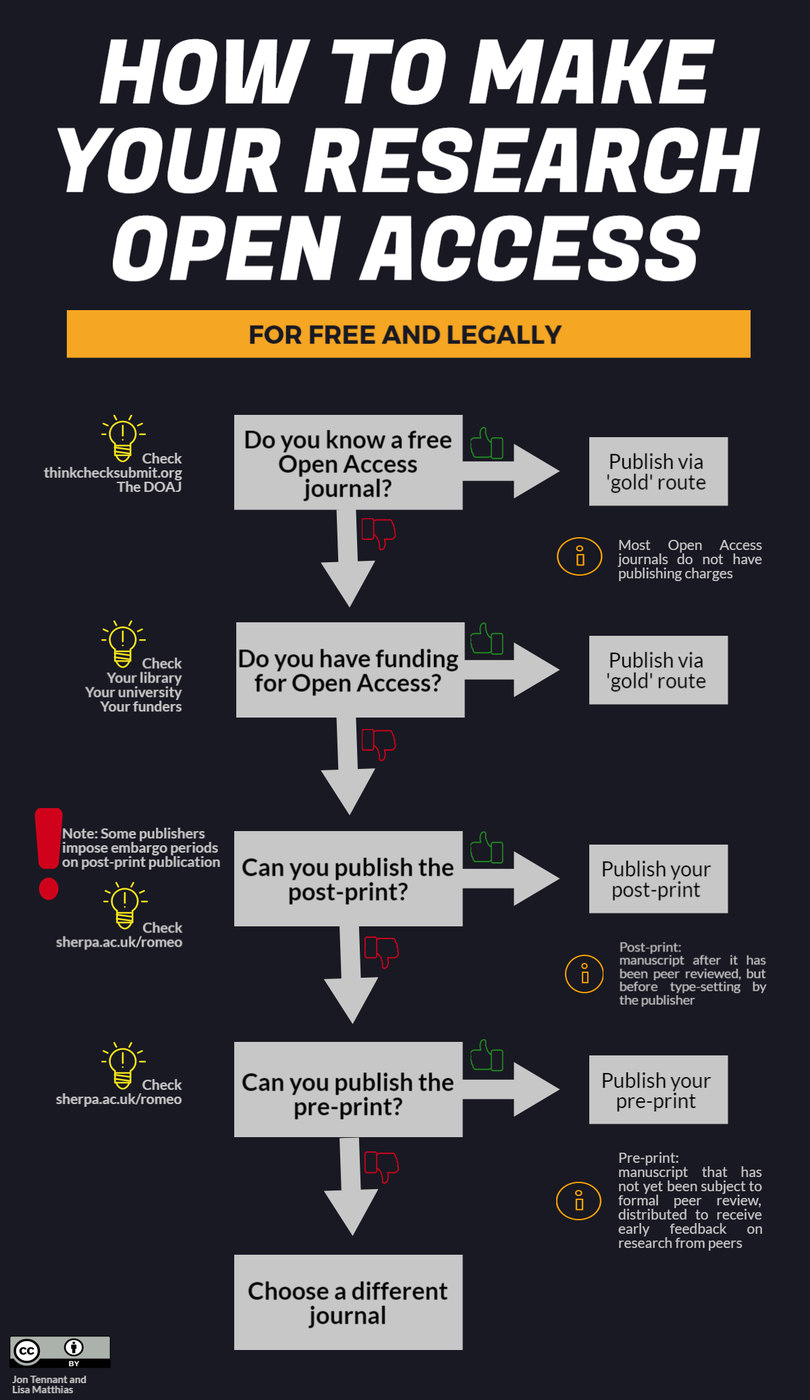Open Access publishing
Gold Open Access
Gold Open Access is the primary publication of research results in an OA journal or similar OA publication media. The respective document is thus directly and immediately published in the OA journal or publication medium––or, a special form in this context, as an Open Access monograph/book. On principle, all costs of publication must be paid by the authors themselves, but in reality expenses are paid either by the institution the authors work for (through publication funds or memberships) or, in case of third-party funding, by the respective research funding organization. Many promoters of Open Access regard Gold Open Access as the ideal to strive for. Still, many of them, for a variety of reasons, are forced to fall back on Green Open Access for a period before reaching their ultimate goal of Gold or even Diamond Open Access.
Green Open Access
Green Open Access is the subsequent or simultaneous deposit of scholarly and scientific literature into institutional or disciplinary repositories which has already been published the conventional way. This secondary publication is sometimes done informally on a homepage, which may be inexpensive but makes the publication or work extremely difficult to find. Following the terminology coined by the Budapest Initiative, Green Open Access is sometimes also referred to as self-archiving. However, not all publishers permit it, or at least they impose a so-called embargo (i.e., a certain period of delay after initial publishing). The exact form of secondary publication (pre- or post-prints) permitted by publishers can be found in the SHERPA/RoMEO directory. Moreover, Green Open Access plays an important role in making theses, monographs, conference papers etc. as well as digital objects of many kinds (images, video clips, audio files, CD-ROMs, additional materials, research data etc.) publicly available.
